Intro
Boost lung function with an incentive spirometer. Learn effective techniques, benefits, and best practices to improve respiratory health and increase oxygen intake, managing conditions like COPD and pneumonia.
The importance of maintaining good respiratory health cannot be overstated, especially for individuals who have undergone surgery, are suffering from respiratory conditions, or are simply looking to improve their overall lung function. One tool that has been widely used to help achieve this goal is the incentive spirometer. This device is designed to help patients improve their lung function by providing a visual incentive to take deep, sustained breaths. In this article, we will delve into the world of incentive spirometry, exploring its benefits, working mechanisms, and steps for effective use.
For many patients, the road to recovery from surgery or illness can be long and challenging. One of the key factors in determining the speed and success of this recovery is the patient's ability to maintain good respiratory health. This is where the incentive spirometer comes in – a simple, yet effective tool that can be used in a variety of settings, from hospitals to homes. By providing a clear, visual representation of a patient's breathing efforts, the incentive spirometer serves as a powerful motivator, encouraging patients to work towards improving their lung function. Whether you are a healthcare professional looking to help your patients recover, or a patient seeking to take an active role in your own recovery, understanding how to use an incentive spirometer effectively is crucial.
The use of incentive spirometers has become increasingly popular in recent years, due in large part to their ease of use and proven effectiveness. These devices are designed to be simple and intuitive, making them accessible to patients of all ages and backgrounds. By providing a clear, visual incentive to take deep breaths, incentive spirometers help patients to develop healthy breathing habits, which can lead to a range of benefits, including improved lung function, reduced pain, and a shorter recovery time. In the following sections, we will explore the benefits and working mechanisms of incentive spirometers in more detail, providing practical examples and statistical data to support our claims.
Incentive Spirometer Benefits
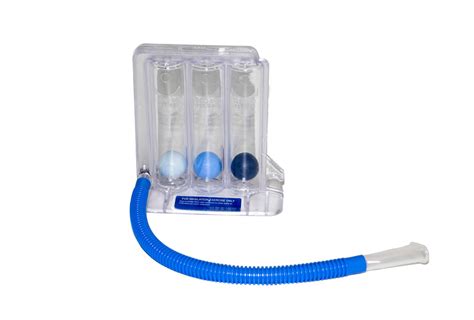
How Incentive Spirometers Work

Steps for Effective Use
To get the most out of an incentive spirometer, it is essential to use it correctly. Here are some steps to follow: 1. Sit comfortably with your back straight and your feet flat on the floor. 2. Hold the spirometer in front of you, with the tube or chamber at mouth level. 3. Take a deep breath in through the tube, filling your lungs completely. 4. Hold your breath for a few seconds, then slowly exhale. 5. Repeat the process several times, taking deep, sustained breaths and holding your breath for a few seconds each time. 6. Monitor your progress on the gauge or display, using the visual feedback to motivate yourself to continue breathing deeply and slowly.Types of Incentive Spirometers
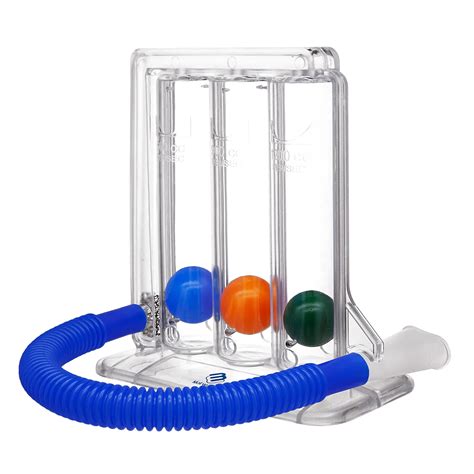
Choosing the Right Incentive Spirometer
With so many different types of incentive spirometers available, it can be difficult to choose the right one. Here are some factors to consider: * Ease of use: Look for a device that is simple and intuitive to use, with clear instructions and a user-friendly interface. * Accuracy: Choose a device that provides accurate and reliable feedback, with a clear and easy-to-read display. * Features: Consider the features that are important to you, such as timers, alarms, and adjustable goals. * Price: Incentive spirometers can range in price from under $20 to over $100, so consider your budget and choose a device that meets your needs.Incentive Spirometer Exercises
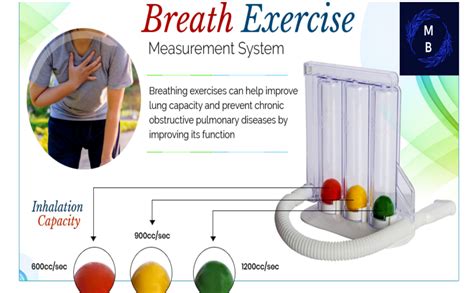
Benefits of Incentive Spirometer Exercises
The benefits of using incentive spirometer exercises are numerous and well-documented. Some of the most significant advantages include: * Improved lung function: Incentive spirometer exercises can help to improve lung function, which can lead to a range of benefits, including increased oxygenation of the blood and improved overall health. * Reduced pain: Incentive spirometer exercises can help to reduce pain and discomfort, making them an effective tool for patients who are recovering from surgery or illness. * Increased patient engagement: The exercises provided by incentive spirometers serve as a powerful motivator, encouraging patients to take an active role in their own recovery and improving patient engagement and compliance.Incentive Spirometer for COPD
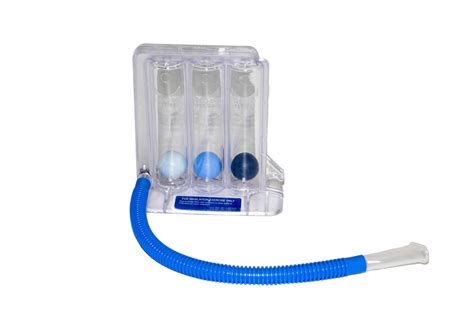
Using an Incentive Spirometer with COPD
To get the most out of an incentive spirometer with COPD, it is essential to use it correctly. Here are some steps to follow: 1. Sit comfortably with your back straight and your feet flat on the floor. 2. Hold the spirometer in front of you, with the tube or chamber at mouth level. 3. Take a deep breath in through the tube, filling your lungs completely. 4. Hold your breath for a few seconds, then slowly exhale. 5. Repeat the process several times, taking deep, sustained breaths and holding your breath for a few seconds each time. 6. Monitor your progress on the gauge or display, using the visual feedback to motivate yourself to continue breathing deeply and slowly.Incentive Spirometer for Asthma
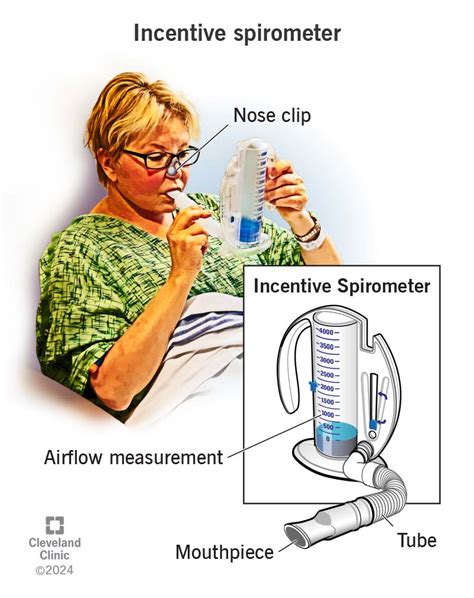
Using an Incentive Spirometer with Asthma
To get the most out of an incentive spirometer with asthma, it is essential to use it correctly. Here are some steps to follow: 1. Sit comfortably with your back straight and your feet flat on the floor. 2. Hold the spirometer in front of you, with the tube or chamber at mouth level. 3. Take a deep breath in through the tube, filling your lungs completely. 4. Hold your breath for a few seconds, then slowly exhale. 5. Repeat the process several times, taking deep, sustained breaths and holding your breath for a few seconds each time. 6. Monitor your progress on the gauge or display, using the visual feedback to motivate yourself to continue breathing deeply and slowly.As we conclude our exploration of incentive spirometers, we hope that you have gained a deeper understanding of the benefits and working mechanisms of these devices. Whether you are a healthcare professional looking to help your patients recover, or a patient seeking to take an active role in your own recovery, we encourage you to consider the use of an incentive spirometer. With its ease of use, proven effectiveness, and range of benefits, this device is an invaluable tool in the pursuit of good respiratory health. We invite you to share your thoughts and experiences with incentive spirometers in the comments below, and to explore the following FAQ section for answers to common questions.
What is an incentive spirometer?
+An incentive spirometer is a device that helps patients improve their lung function by providing a visual incentive to take deep, sustained breaths.
How does an incentive spirometer work?
+An incentive spirometer works by providing a visual representation of a patient's breathing efforts, serving as a powerful motivator to encourage deep, sustained breaths.
What are the benefits of using an incentive spirometer?
+The benefits of using an incentive spirometer include improved lung function, reduced pain, and a shorter recovery time, as well as increased patient engagement and compliance.
Can I use an incentive spirometer at home?
+Yes, incentive spirometers can be used at home, making them a convenient and accessible tool for patients who are recovering from surgery or illness.
How often should I use an incentive spirometer?
+The frequency of use will depend on your individual needs and goals, but it is generally recommended to use an incentive spirometer several times a day, taking deep, sustained breaths and holding your breath for a few seconds each time.
